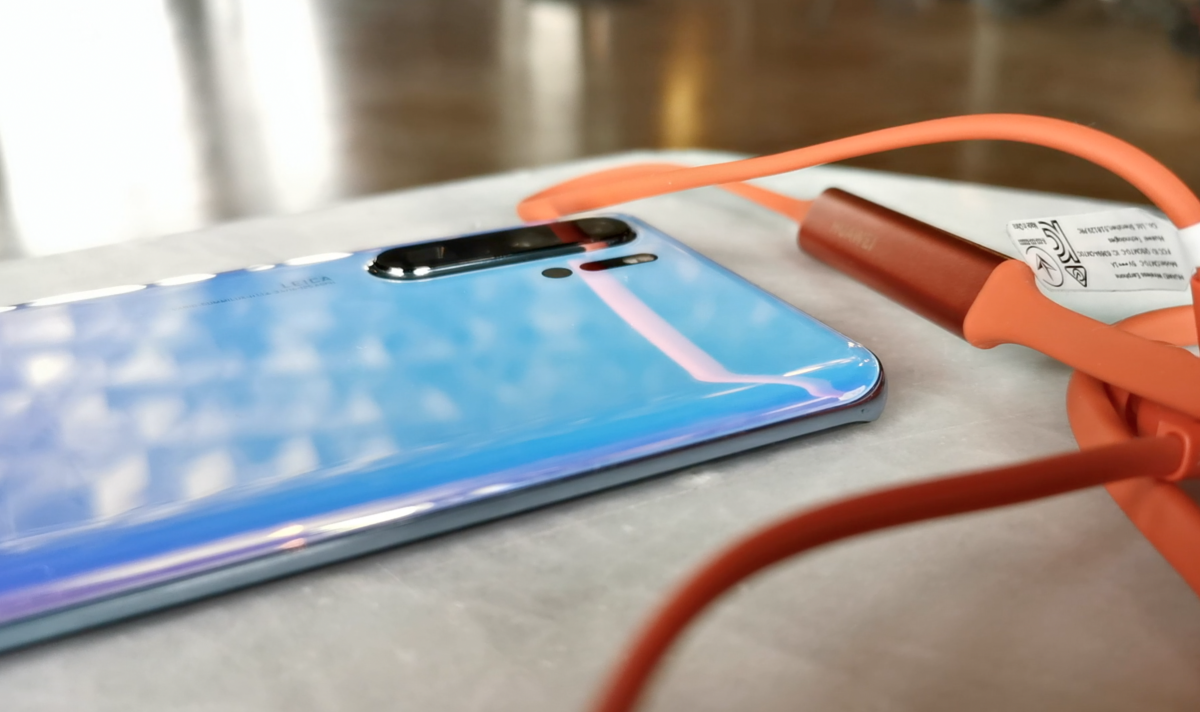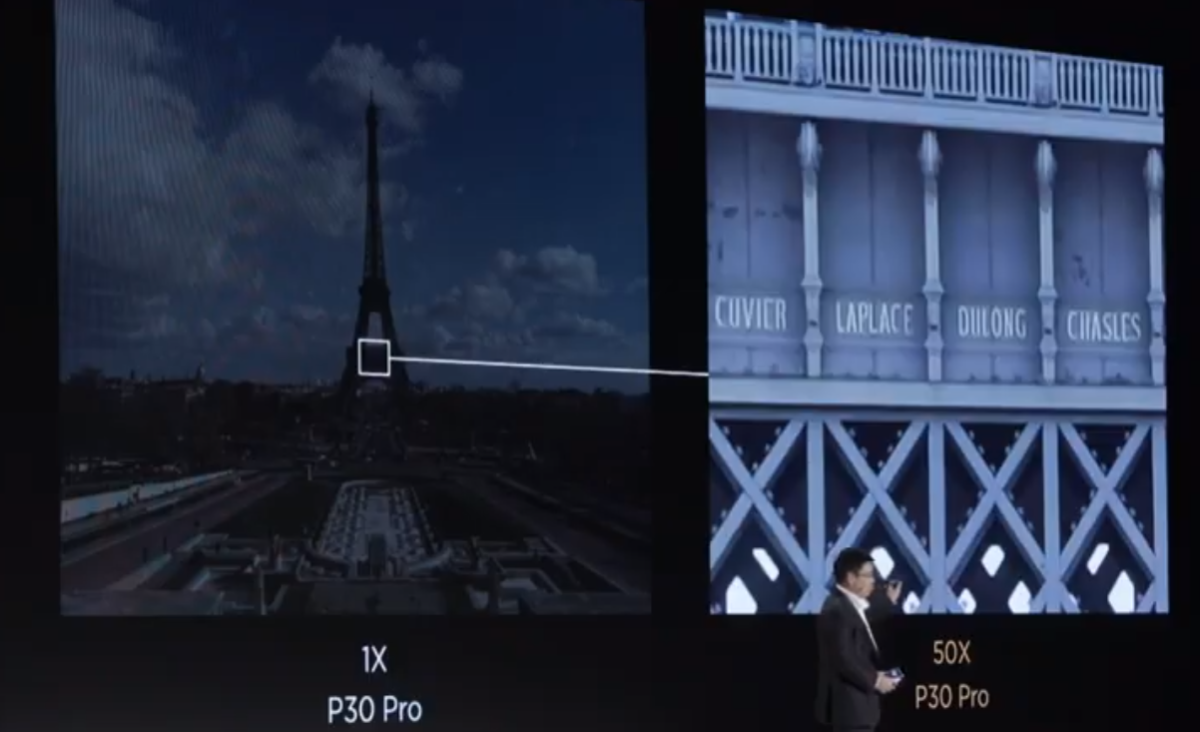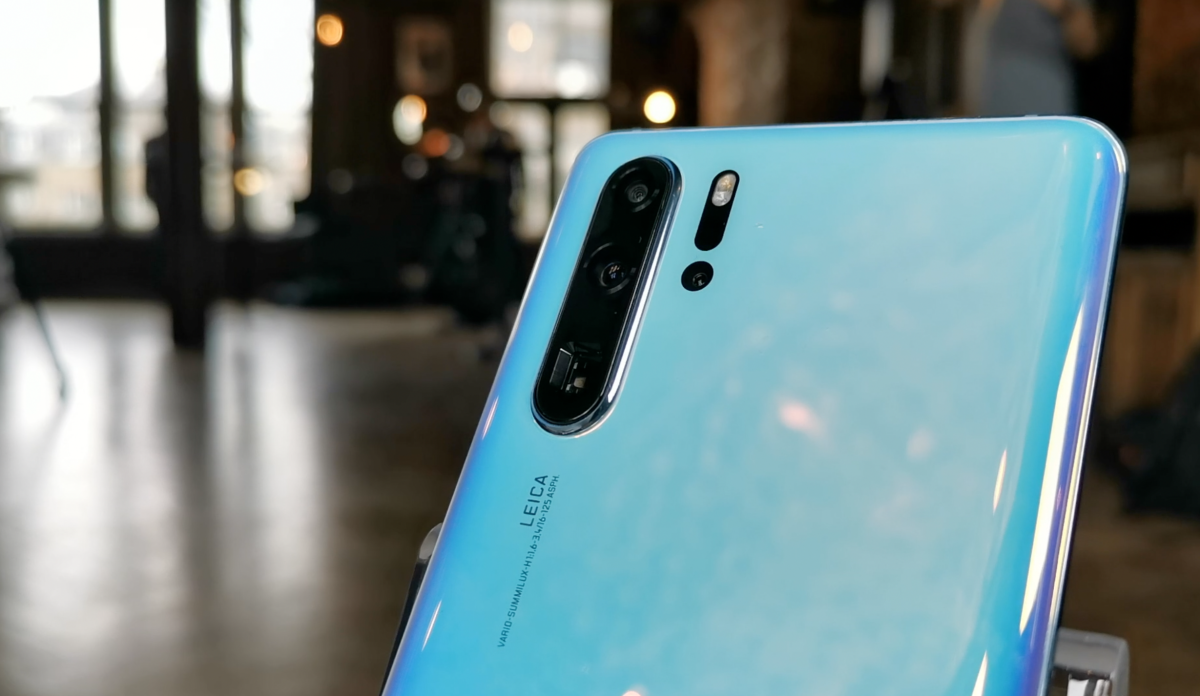Huawei, the Chinese tech firm at the centre of U.S. spy fears, has announced a new series of phones that promise to shake up mobile photography: the P30 and P30 Pro.
In a London briefing last Thursday, Newsweek was given a preview of the devices before the official launch, which took place in the bustling city of Paris. The news comes roughly a month after the company unveiled a headline-grabbing foldable smartphone.
In March last year, the company released the P20 Pro, a mid-to-high range smartphone that made lofty claims about its photography capabilities—and largely delivered.
While it was quickly overshadowed by release of the Mate 20 Pro in October, the phone helped to enforce the company's position as the second largest smartphone maker in the world.
The P30 Pro, which is the more powerful and more interesting of the two new devices, takes a number of key aesthetic choices from the Mate 20 Pro—namely the curved edges, tiny bezels and narrower frame. The screen is better now as well—boasting a high resolution 6.47-inch OLED with a 19.5:9 aspect ratio. Like the Mate 20, it has an in-screen fingerprint sensor.
Aesthetically, both handsets are attractive and build on last year's design. The P30 and P30 Pro have a small teardrop notch holding a 32 megapixel front camera. The devices come in five colors: Breathing Crystal, Amber Sunrise, Pearl White, Aurora and a conservative black.

But it is mobile photography where the P-range shines. The Pro has a quad-camera setup: a 40 megapixel "superspectrum" lens (f/1.6 with optical image stabilization), a 20 megapixel ultra wide lens (f/2.2), an 8 megapixel 10X hybrid zoom lens and a time-of-flight (TOI) lens for depth.
On stage today, Huawei Consumer Business Group CEO Richard Yu said the P-series aims to bring professional photography and video capabilities to consumer smartphones.
The CEO said the P30 Pro was the first in the industry to use a periscope-style camera based around RYYB (Red, Yellow, Yellow Blue) filters over the standard RGGB (Red Green Green Blue). This reportedly lets the camera ingest more light—boosting the quality of pictures.
ISO sensitivity—the ability to capture light—has been boosted to a whopping 409,600 on the new Pro. For comparison, the P20 Pro—which was lauded for its photo credentials—was ISO 102,400. Essentially, this means capturing photos in dark conditions is easier than ever. The presentation placed P-series images alongside those from competitors, including Samsung.
"The Galaxy phone can't see the galaxy," Yu quipped, showing a night mode snap.
One big selling point of the Pro is that zoom, which featured heavily in the company's marketing material (plenty of which leaked onto the internet long before today.) The P30 Pro boasts a superzoom lens with image stabilization: 5X optical, 10X hybrid and a 50X digital zoom. In comparison, Apple's iPhone Xs Max offers a 5X optical zoom and a 10 X digital zoom.

Video has been given an upgrade, with new image stabilization features. It also has a new "dual view" mode that allows two cameras to be used at the same time, with outputs viewed simultaneously.
For example, the right side could be used to view the wide angle perspective, while the left side could show the standard format. Both will appear in real-time. Sure, it's not a feature that will be used every day, but it's a nice feature to have when trying to find the perfect shot.
Inside the P30 Pro is a Kirin 980 chipset, the same as the Mate 20 Pro. Also under the hood is a 4200 mAh battery, offering 70 percent charge in 30 minutes. Both phones are compatible with OneHop, the connectivity feature on the firm's new laptops that lets users share files in a matter of seconds. It feels like an incremental step in exactly the right direction.
Despite the promised innovations, availability will continue to be limited in the U.S. due to ongoing political pressures that have plagued the company's operations.

In February last year, top intelligence figures told the Senate Intelligence Committee they were "deeply concerned" about using Huawei and ZTE products in the nation's telecommunications networks. They claimed that doing so would open up the possibility of foreign companies being used for espionage, such as being able to "maliciously modify or steal information."
No evidence backing up the claims was publicly released—but in August last year President Donald Trump signed a law banning Huawei and ZTE products from U.S. government networks. The U.S. has ramped up pressure amid the rollout of 5G technology, which Huawei is pushing hard.

Last December, tensions spiked following the arrest of Huawei's chief financial officer Meng Wanzhou at the request of the U.S. Wanzhou, now released on bail, is the daughter of the firm's founder Ren Zhengfei. The case centred on allegations she evaded trade sanctions.
Roughly a month later, the U.S. filed criminal charges against Huawei over the alleged theft of trade secrets. FBI Director Christopher Wray accused it of "dishonest business practices."
Responding on-the-record, company founder Zhengfei denied any suggestion of wrongdoing or espionage in February during an interview with BBC World News.
"The charges that the U.S. has made are fairly marginal," he said, speaking via an interpreter. "There is not enough to say that Huawei has become what it is today by stealing from the U.S. Today, we have many things that the US doesn't. How can we steal what they don't have?"
Zhengfei played down the impact U.S. opposition exerts, saying: "If the lights go out in the west, the east will still shine. And if the north goes dark, then there is still the south. America doesn't represent the world. America only represents a portion of the world."
Clearly, Huawei means different things to different audiences. For the U.S. security chiefs, it is a threat to their system—a thriving foreign competitor to America's own tech interests.
Yet for consumer tech enthusiasts, Huawei is exciting because it innovates in a market where playing-it-safe has become common. It has been among the first to go all-in on foldable phones, was the first to provide an in-screen fingerprint scanner and, with the launch of the P30 Pro, could shake up mobile photography for the second year running.
Uncommon Knowledge
Newsweek is committed to challenging conventional wisdom and finding connections in the search for common ground.
Newsweek is committed to challenging conventional wisdom and finding connections in the search for common ground.
About the writer
Jason Murdock is a staff reporter for Newsweek.
Based in London, Murdock previously covered cybersecurity for the International Business Times UK ... Read more
To read how Newsweek uses AI as a newsroom tool, Click here.








